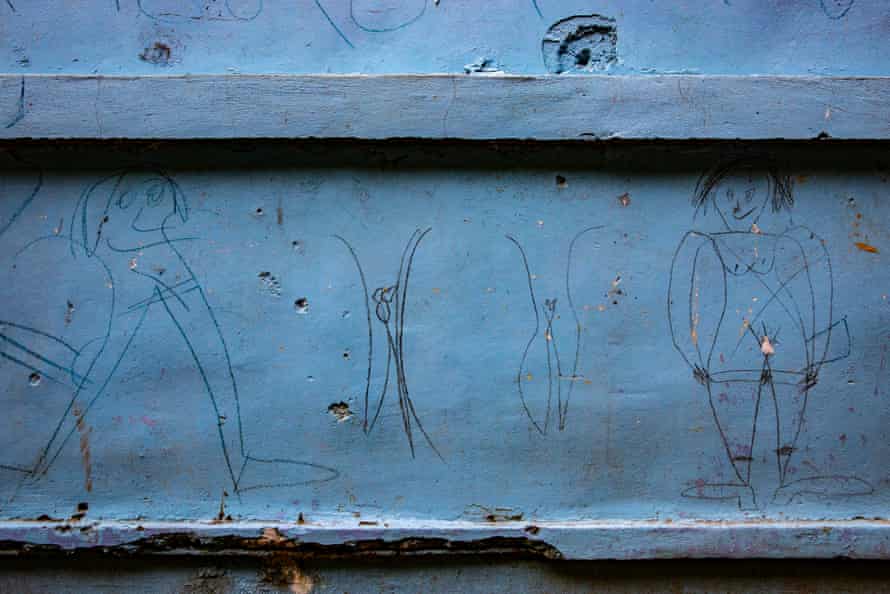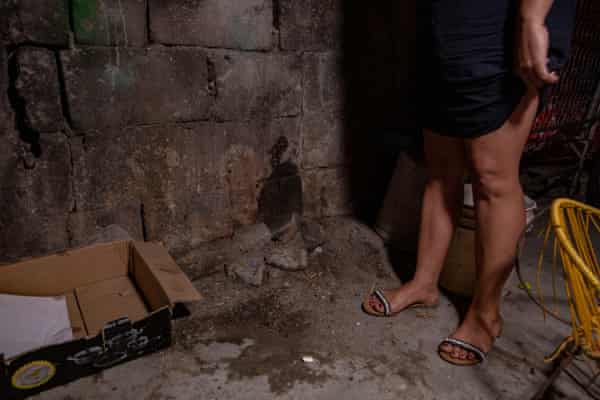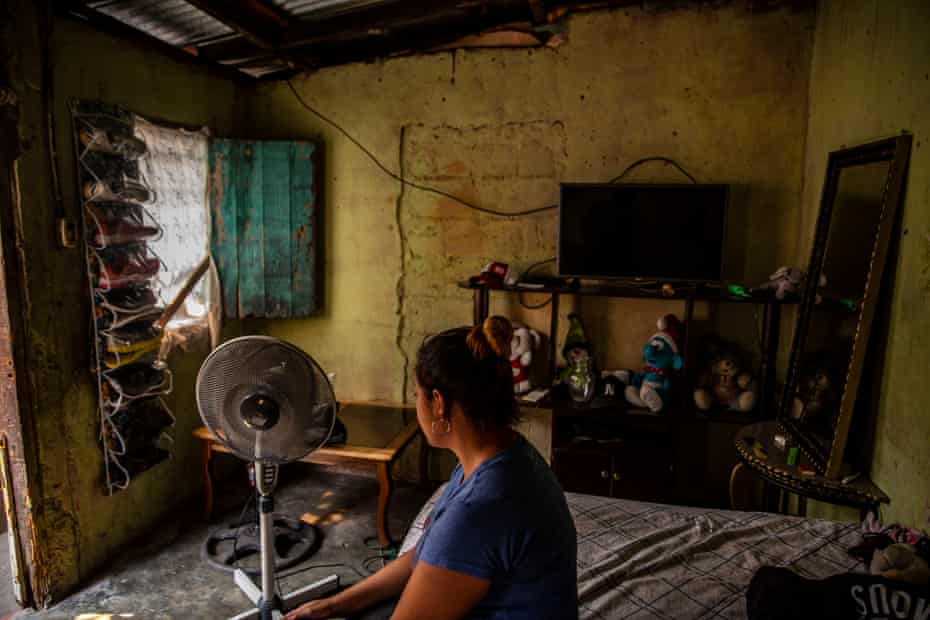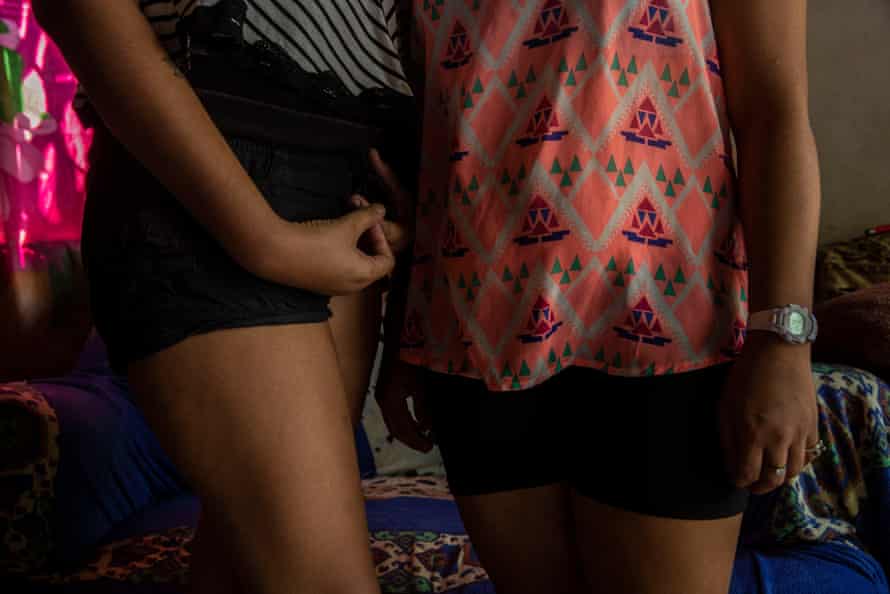Yot is a secret that spreads by word of mouth in poor neighborhoods across Honduras; where to buy the pills, how to use them without being discovered, what to say if you have to go to the hospital. Blunt objects, herbal infusions, plant medicine all become tools of a deadly trade in illegal abortions when no other option exists.
Carla*, from a rundown part of the Honduran city of San Pedro Sula, was 17 and still at school when she realized she was pregnant. When they found out, her parents made her leave the house, saying she was on her own.
“I was by myself. Nobody would give a job to an underage pregnant girl so I didn’t have any other choice. I couldn’t have the baby,” she says.
When she was three months pregnant and growing increasingly desperate, she drank a mixture of herbs and cinnamon to try to end her pregnancy. “I drank it all and it worked but I had a lot of bleeding and a lot of pain. I didn’t go to the hospital because I was scared they’d work out what I’d done and tell the police. I told my parents I’d fallen off my bike and lost the baby.”
A few months later, she became pregnant again when she and her boyfriend were living together in a one-room house. “We don’t have enough money to eat. I don’t have a job and my boyfriend sells drugs to try to pay our rent. We threw the foetus into the river near the house were we live.”
In Honduras, where more than 66% of the population lives in poverty, it is the poorest women who pay the highest price for the country’s draconian abortion laws, among the strictest in the world.
The state’s control over women’s reproductive health is almost absolute. Abortion in Honduras is illegal in all circumstances, including rape and incest. Abortions are not allowed to save a woman’s life or when the foetus can’t survive outside the womb. Emergency contraception – the morning-after pill – is also banned.
With an estimated 40% of unplanned or unwanted pregnancies, an illegal abortion industry thrives, carrying out between 50,000 and 80,000 clandestine terminations each year.
Honduras’s abortion laws are killing women: it is estimated that if there was proper access to contraceptives and abortion services, maternal deaths would drop by about 70%.
In 2019, a Human Rights Watch report detailed the “enormous suffering” in Honduras as a result of the complete ban on abortions imposed throughout the country, warning that it reflects the future for the poorest women and girls in the United States should abortion also be criminalised.
“What our research in Honduras shows is what life looks like for women and girls when abortion is banned or restricted,” said Margaret Wurth, a senior woman’s rights researcher at Human Rights Watch. “This is a frightening preview of what could come to pass in the US.”

The abortion laws exist in an environment where violence against women is widespread. Honduras you have one of the highest murder rates in the worldwith a woman killed every 22 hours, according to Human Rights Watch. In 2012, one government survey found that nearly a quarter of all women had been sexually or physically abused by a partner.
Yanet*, 28, also had an illegal abortion in her third month of pregnancy. Her boyfriend of her beat her. He also sold drugs to make money to survive.
“We don’t make enough money to provide for ourselves, let alone a child,” she says.

Like many women in countries where abortion is illegal, Yanet started looking for the cytotec pill (also called misoprostol), known as the “abortion pill”.
Also used to treat stomach ulcers, cytotec is restricted to use in hospitals by medical professionals but a hidden market exists among women seeking to end their pregnancies.
“I swallowed two pills and inserted another two in my lowest parts,” says Yanet. “It was painful but it worked; I had a lot of bleeding but I didn’t go to the hospital as I was too scared. I buried the fetus in my back yard.”
The ban on abortions can have devastating consequences for women in Honduras. Most of the sexual assaults that occur in the country are affected by children (70%) and early pregnancy is one of the most dangerous consequences of sexual violence on girls and adolescents.

Kaylie*, now 18, had her first abortion at 13. “When I was five, my mother used to send me to my uncle who would pay $1 (80p) to have sex with me. We were extremely poor. Also my father abused me, so when I was nine I left my house and took to the streets. When I was 10, I was already taking drugs and I went to live with a boy of 19 who used to feed me.
“I became pregnant at 13 and went home to my mother who gave me the herbal drink. I had a lot of bleeding but I survived.”
A year later, at 14, she became pregnant again and had another abortion. After a few weeks, she began to feel unwell and asked her friend of Ella Jasmine*, whom she had met on the streets, for help. Jasmine managed to raise the $200 for a private clinic where she was told she had damaged her uterus. She hasn’t had a period since.

Jasmine has also had three abortions. Abandoned by her parents de ella aged eight, she was 12 when she became pregnant and sought an illegal termination. Afterwards, she was bleeding so heavily that she decided to go to the hospital.
“The medical staff wanted to tell the police but my aunt turned up and got me out of the hospital. But then she left me to live on the street again,” she says. After surviving another two abortions, she has now managed to get contraception injections. She and Kaylie live together, working as maids. They make $20 a month each.
Blanca* decided to risk an abortion after her husband left her and her three children to travel illegally to the US. “It would have been my fourth child, my husband had left and I didn’t have any idea of how to provide for another baby. I make $50 a week and with three children it is already hard enough,” she says.
“I feel guilty, it was a hard decision but I took it because I didn’t have any other choice and I would have not been able to give a child the life he deserved. Women should be able to decide because they are the ones that have to take care of the children after men leave.”

With limited and expensive access to healthcare, midwives in poor neighborhoods often provide a lifeline for pregnant women. Yet many fear the consequences of helping women who are suffering because of botched abortions.
Sign up for Her Stage to hear directly from incredible women in the developing world on the issues that matter to them, delivered to your inbox monthly:
Sign up for Her Stage – please check your spam folder for the confirmation email
Berta Lillian Montoya Morataya, now 73, started working as a midwife when she was 12. She lives with her extended family in Cielito Lindo, a low-income neighborhood in San Pedro Sula. When women come to her bleeding from backstreet abortions, she sends them away. “I don’t help them, I send them straight to hospital,” she says. “I don’t want to be involved in a crime and end up in jail.”
* Names have been changed
-
Reporting for this story was supported by the International Women’s Media Foundation, as part of the Reproductive Health, Rights, and Justice in the Americas reporting initiatives
www.theguardian.com
George is Digismak’s reported cum editor with 13 years of experience in Journalism